Touring Mount Koya
Stunning remnants of the past
Mount Koya is an amazing place where history, culture, and nature are all condensed in one spot.
On this page, we introduce places worthy of note for your next visit to Mount Koya.
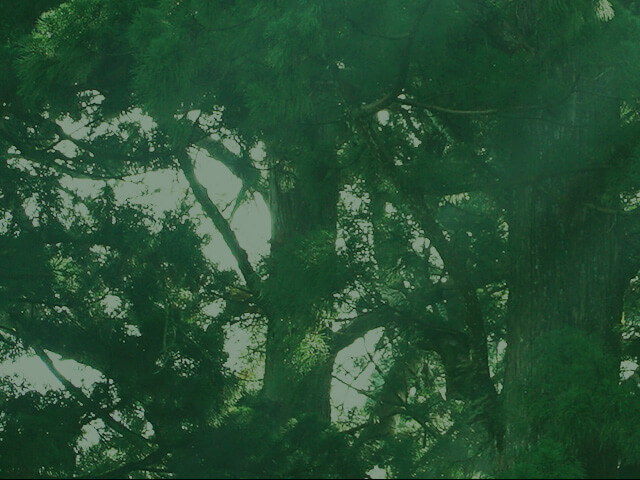
-
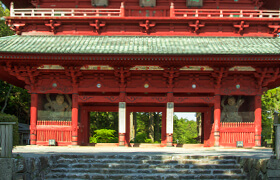
The Daimon (Great Gate)
This large gate marks the entrance to Mount Koya and consists of a two-tiered structure spanning five units across.
1
-
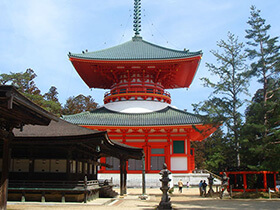
Danjo Garan
This is the central area of Mount Koya, where the major Buddhist services are held. Buildings here include the main temple hall (Kondo) and the Konpon Daito, a large pagoda.
2
-
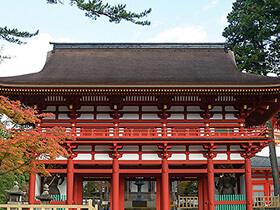
Chumon
Situated at the lowest elevation before approaching the main temple hall, what remains of this gate is the original cornerstone.
3
-
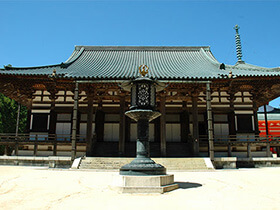
Kondo
The Kondo, or main temple hall, has served a central function at Mount Koya since the middle of the Heian period (9th century).
4
-
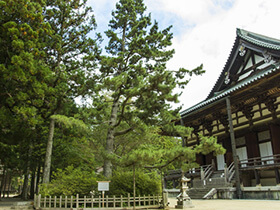
Toten no Matsu and Shakushi no Shiba
It is said that in ancient times, one of the priests ascended to Maitreya’s Pure Land at this site.
5
-
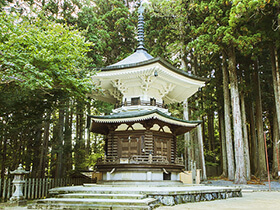
Rokkaku Kyuzo (hexagonal depository of the scriptures)
Bifukumon-in, the Empress consort of the “cloistered emperor” Toba, who was forced to abdicate the throne and become a monk, had this structure built to pray for her late husband’s happiness in the next world. It once held the complete Buddhist scriptures copied in gold ink on blue paper (now stored at the Reihokan Museum).
6
-
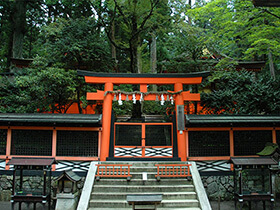
Miyashiro
In year 10 of the Konin era (819 AD), Kobo Daishi prayed for the transfer of the tutelary deity from Amano-sha Shrine in the foothills of Mount Koya, and the deity ceremonially transferred to this site.
7
-
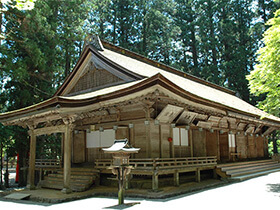
Sanno-in
Sanno-in acts as the hall of worship for the shrine and is constructed with a gabled, hipped roof.
8
-
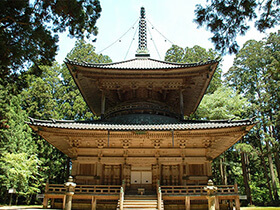
Saito (West Tower)
This structure was built by Kobo Daishi’s successor, Shinzen Daitoku, based on Kobo Daishi’s master plan for the site.
>9
-
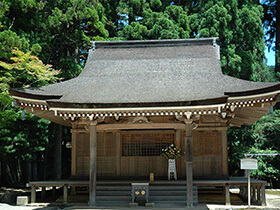
Kujaku-do
Emperor Go-Toba built this hall as a gesture of thanks to Engo, one of the stewards of Toji Temple, who used the Kujaku (peacock) rite to usher in rain and rescue the capital from a long drought.
10
-
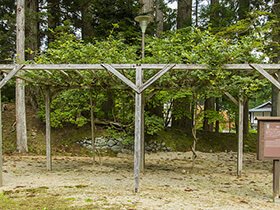
Sakasahi no Fuji (Inverted Wisteria)
Kishin Shonin, vowing to revitalize Mount Koya from a period of decline and decay, planted wisteria upside down along the road as an act of prayer. Astonishingly, the flowers bloomed, a harbinger of Mount Koya’s rebirth.
11
-
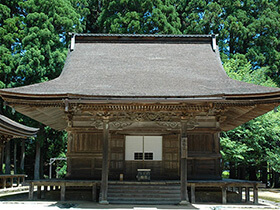
Junteido
The figure of Cundi here, the principal object of worship, is said to have been made by Kobo Daishi himself for a ritual upon entering the priesthood.
12
-
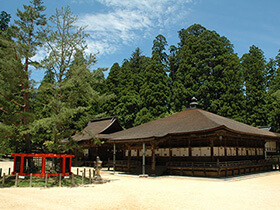
Miedo (Great Portrait Hall)
Originally built as a hall for Kobo Daishi to enshrine his Buddhist images and train, it later went on to be used as a site to enshrine portraits of Kobo Daishi and his disciples, giving it the name it has today.
13
-
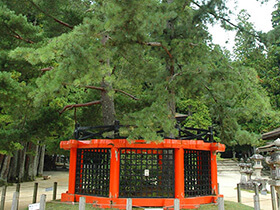
Sanko no Matsu (Trident Pine)
When Kobo Daishi hurled a vajra scepter from China, it traveled to Japan and landed on this tree, causing it to give off light every night.
14
-
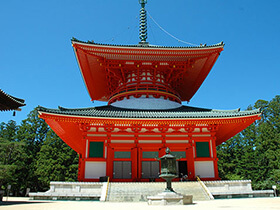
Konpon Daito
Built as a tower embodying the esoteric Shingon teachings, the edifice houses a vivid mandala piece.
15
-
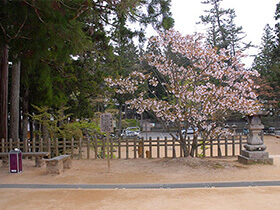
Taimen-zakura
It is said that Kobo Daishi appeared at this cherry tree to thank Taira no Kiyomori for reconstructing the Daito after it was burned down by lightning.
16
-
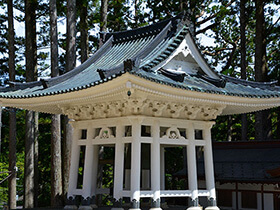
Daito bell: Koyashiro
Initiated in Kobo Daishi’s days out of a desire to save all sentient beings, this bell was finally cast during the era of his successor, Shinzen Daitoku.
17
-
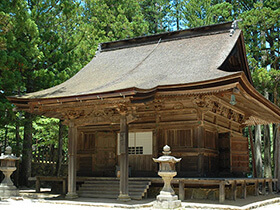
Aizendo
In the first year of Kenmu (1334), Emperor Go-Daigo ordered this hall to be built as a prayer for world peace and longevity of the emperor.
18
-
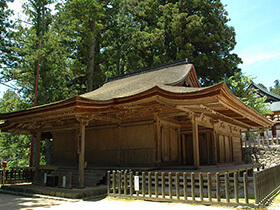
Fudodo
Hachijo-nyoin, the Imperial Princess under Emperor Toba, prayed for the repose of all beings and had this hall built by Gyosho-shonin.
19
-
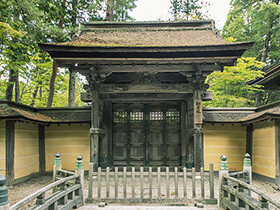
Kangakuin
Created by Hojo Tokimune as a training ground for the monks on Mount Koya, this complex was built within Kongo Sanmaiin.
20
-
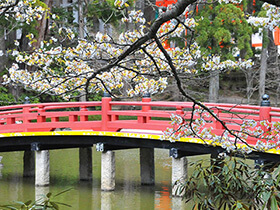
Hasu-ike (Lotus Pond)
This pond was constructed to pray for the delivery of those suffering from drought. It enshrines a statue of Zennyo Ryuo and the Buddha’s ashes.
21
-
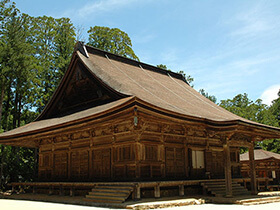
Daiedo
Gotsuji Saiin, the Imperial Princess under Emperor Toba, had this hall constructed in memory of her father.
22
-
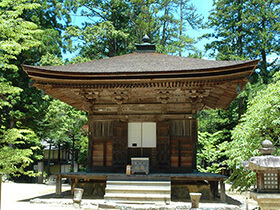
Sanmaido
Saiko held the Rishu Zanmai rite at this hall, so it came to be called Sanmaido.
23
-
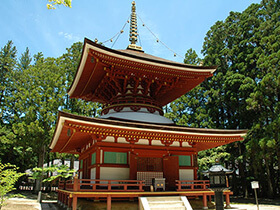
Toto
In the second year of Daiji (1127), this tower was built by Daigosanboin Shokakugon no Sojo.
24
-
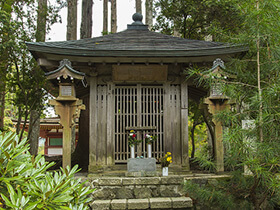
Chisenbyo
東塔より東へ少し行くと、小さな廟がひっそりとたたずんでいます。この廟は、 Walk a bit east of Toto to find this secluded little shrine. This mausoleum enshrines Chisen Daitoku, nephew of Kobo Daishi.
25
-
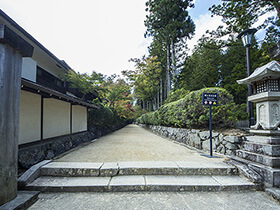
Jabara-michi
This small path extends from the monastery entrance. The view of Mount Koya seen from here was likened to the belly of a dragon, which is where the route’s name comes from.
26
-
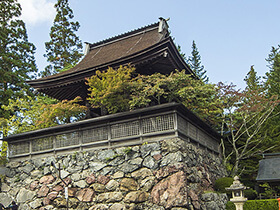
Rokuji no Kane
Enclosed behind a tall stone wall at the entrance to the monastery is this belltower. It was built by Masanori Fukushima in the fourth year of the Genna era (1618).
27
-
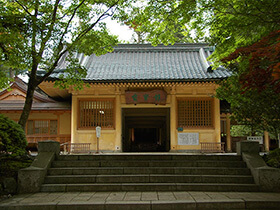
Koyasan Reihokan Museum
This building was created to store the various cultural relics from Kongobuji and throughout Mount Koya, among them Buddhist paintings and statues.
28
-
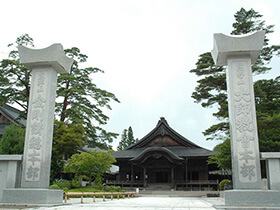
Mount Koya Taishi Kyokai
The Daikodo was built in Taisho 14 (1925) to commemorate the 1,100 years since Mount Koya’s founding. It enshrines the image of Kobo Daishi flanked by images of Ragaraia and Acala.
29
-
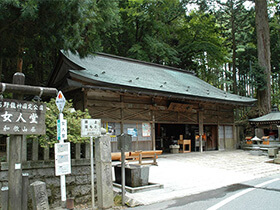
Nyonindo
Until the fifth year of Meiji (1872), women were strictly prohibited from entering the temple grounds proper. For this reason, dedicated places of worship were constructed alongside each entrance and called “Women’s Halls” (Nyonindo).
30
-
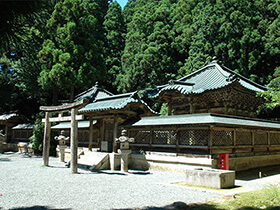
Tokugawa Clan Mausoleum
Built in year 20 of the Kan’ei era (1643) by Tokugawa Iemitsu, the third shogun in the Tokugawa lineage.
31
-
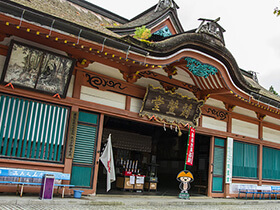
Karukaya-do
The story of Karukaya-doshin and Ishidomaru is a well-known tragic tale.
32
-
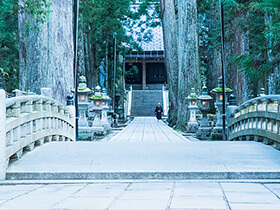
Okunoin
One of the central pillars of faith on Mount Koya, this is said to be where Kobo Daishi entered the next world.
33
-
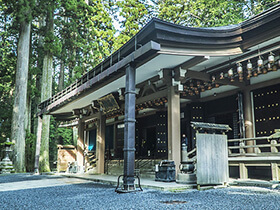
Torodo
34
-
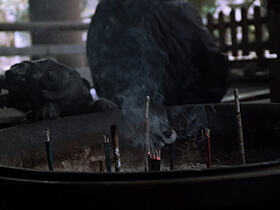
Mausoleum of Kobo Daishi
35
-
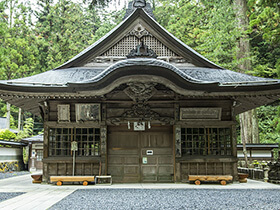
Shotokuden Tea Hall
36
